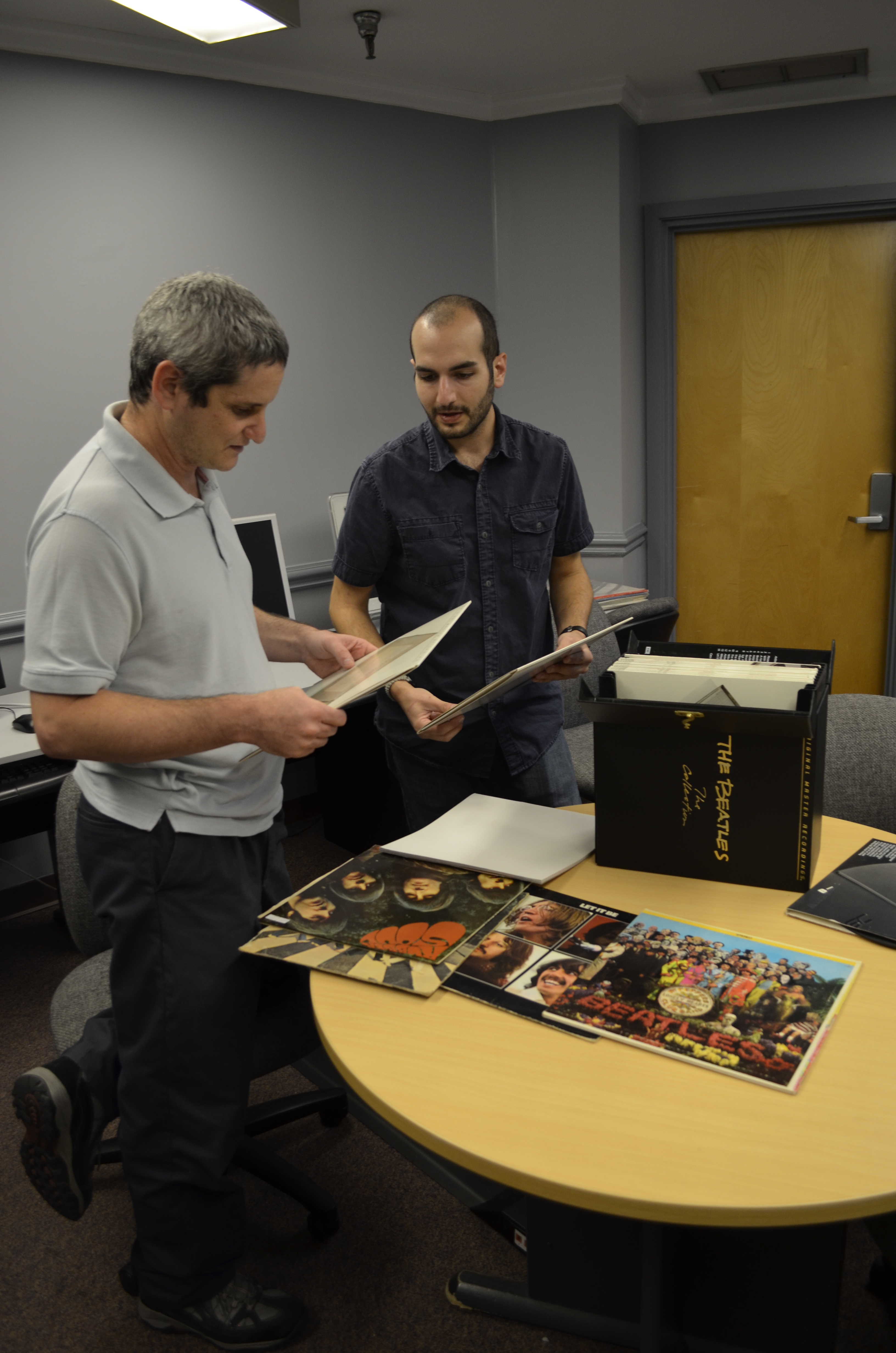Lior Shamir, Lawrence Technological University – Artificial Creativity

Lawrence Tech Associate Professor Lior Shamir (left) and graduate student Joe George look over the liner notes on some of the Beatles albums that they analyzed in a recent research study.
Do you know The Beatles as well as a computer does?
Lior Shamir, a professor of computer science at Lawrence Technological University, is working to improve the creative intelligence of computers.
Lior Shamir is an associate professor of computer science at Lawrence Technological University in Southfield, Michigan. He received his bachelor’s degree in computer science from Tel Aviv University, and his Ph.D in computational science from Michigan Technological University. He was a research fellow at the National Institute of Aging.
Artificial Creativity

It has long been assumed that computers would never be able to match the ability of the human brain to analyze and compare creative compositions in art and music. Recent research in artificial intelligence has proved otherwise.
For instance, by using advanced computer vision and pattern-recognition algorithms computers can identify artistic styles and influential links between artists. In one of my research projects, a computer identified that Jackson Pollock shares similarities with Vincent Van Gogh.
In music, algorithms can quantify the progression in the musical styles of musicians. In a recent study of mine, a computer correctly placed in chronological order the albums of the Beatles and several other popular rock groups.
Computers don’t excel in analyzing discrete data such as pixels in images or frequencies in audio files, so each image or audio sample is converted into almost 3,000 numerical values and then transformed to its spectrogram representation. While the human brain is limited to a few dimensions, computers can handle literally thousands. That allows pattern recognition and statistical methods to perform a comprehensive analysis based on a broad variety of aspects that describe the image or audio data numerically.
Algorithms are already being used to assist in searching, browsing, and organizing large music databases, as well as identifying music that matches an individual listener’s musical preferences.
The music understanding research was started after I developed algorithms to analyze the communication patterns of whales. By analyzing over 15,000 audio samples we noticed that just like humans, whales have distinct dialects in different parts of the world.
Many more breakthroughs are sure to come in this area of artificial intelligence.
Science Direct: Computer analysis of similarities between albums in popular music



